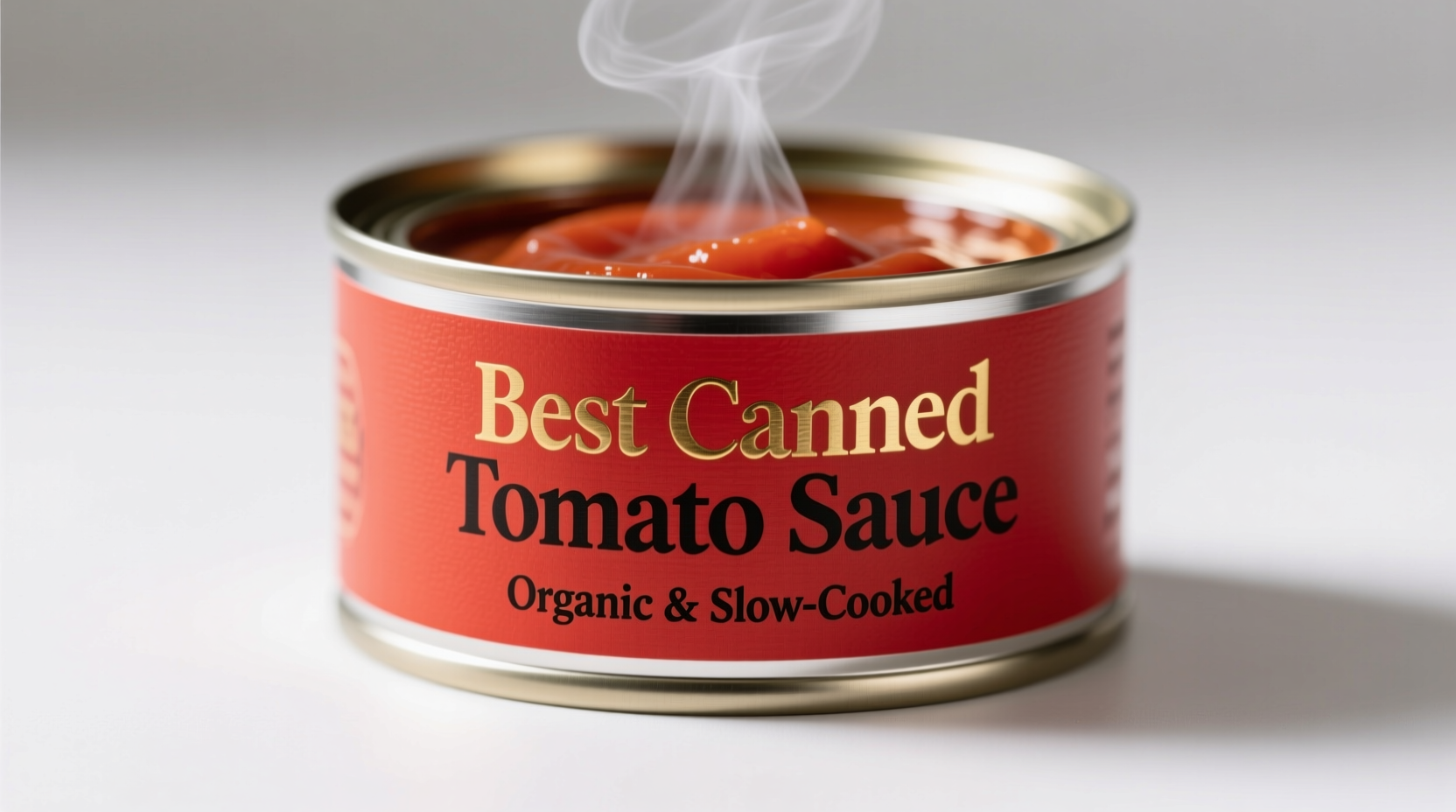What Makes a Truly Great Canned Tomato Sauce
When selecting the best canned tomato sauce, focus on three critical elements that determine quality: ingredient purity, tomato variety, and processing method. High-quality sauces contain only tomatoes (often specified as passata di pomodoro), tomato juice, and a small amount of salt—nothing more. The absence of added sugar separates authentic Italian-style sauces from many American commercial varieties that mask inferior tomato quality with sweetness.

How Tomato Processing Affects Your Cooking Results
Understanding the production timeline helps explain quality differences. Modern canned tomato processing has evolved significantly since the 1930s:
| Decade | Processing Innovation | Impact on Sauce Quality |
|---|---|---|
| 1930s | Basic thermal processing | Overcooked flavor, inconsistent texture |
| 1960s | Flash heating technology | Improved freshness retention |
| 1990s | Acidity control methods | Balanced flavor profiles |
| 2010s | Single-variety harvesting | Purer tomato flavor expression |
According to USDA Food Safety and Inspection Service guidelines, properly processed canned tomatoes maintain nutritional integrity while eliminating food safety concerns. The current industry standard involves flash-heating tomatoes within hours of harvest to preserve lycopene content and natural sweetness.
Practical Buying Guide: Matching Sauce to Your Cooking Needs
Not all "best" tomato sauces work equally well for every application. Consider these context boundaries when selecting your product:
For Classic Pasta Dishes
Choose San Marzano DOP-certified sauce with 4.5% or lower acidity. These varieties have naturally sweet flavor that doesn't require sugar addition. The Consorzio del Pomodoro San Marzano certification ensures authentic Italian-grown tomatoes from the volcanic soil region near Mount Vesuvius.
For Pizza Making
Opt for thicker, less watery sauces with higher tomato solids content (minimum 8%). Look for "polpa" or "passata" designations rather than "sauce" which often indicates added liquid. The California Tomato Research Institute notes that higher solid content prevents soggy pizza crust.
Budget-Friendly Cooking
When cost matters, select standard crushed tomatoes rather than pre-seasoned sauces. You'll save 30-40% while gaining control over seasoning. University of California agricultural studies show that basic crushed tomatoes from California's Central Valley often match premium Italian imports in flavor tests when properly seasoned at home.
Decoding Labels: What Really Matters
Many shoppers misunderstand key labeling terms. Here's what actually indicates quality:
- "San Marzano" without DOP certification - May be grown elsewhere using the seed variety, but lacks the distinctive volcanic soil characteristics
- "No Salt Added" - Gives you control over sodium content, crucial for heart-healthy cooking
- "Crushed" vs "Sauce" - Crushed tomatoes contain only tomatoes, while "sauce" often includes added liquid and seasonings
- "Organic" certification - Indicates no synthetic pesticides, but doesn't guarantee better flavor
Avoid These Common Canned Tomato Sauce Mistakes
Even experienced cooks make these errors when selecting canned tomato products:
- Assuming higher price means better quality - Many mid-range brands perform equally to premium options in blind taste tests
- Ignoring acidity levels - High-acid sauces overpower delicate ingredients in dishes like puttanesca
- Using the same sauce for all applications - Pasta, pizza, and soup each benefit from different sauce textures
- Not checking sodium content - Some brands contain up to 500mg per serving, exceeding recommended limits
Professional Flavor Enhancement Techniques
Transform basic canned tomato sauce into restaurant-quality creations with these chef-approved methods:
- Simmer with a Parmesan rind for 20 minutes to add umami depth
- Add a pinch of baking soda to neutralize excessive acidity
- Finish with fresh basil and a drizzle of high-quality olive oil
- For richer flavor, sauté minced carrots and celery in olive oil before adding sauce
These techniques work particularly well with standard crushed tomatoes, helping you achieve results comparable to premium sauces at a fraction of the cost.
Storage and Usage Best Practices
Proper handling maintains quality after opening:
- Transfer unused sauce to glass container (not left in can)
- Refrigerate and use within 5 days for best flavor
- Freeze in ice cube trays for portion-controlled future use
- Always heat sauce gently—boiling destroys delicate flavor compounds











 浙公网安备
33010002000092号
浙公网安备
33010002000092号 浙B2-20120091-4
浙B2-20120091-4